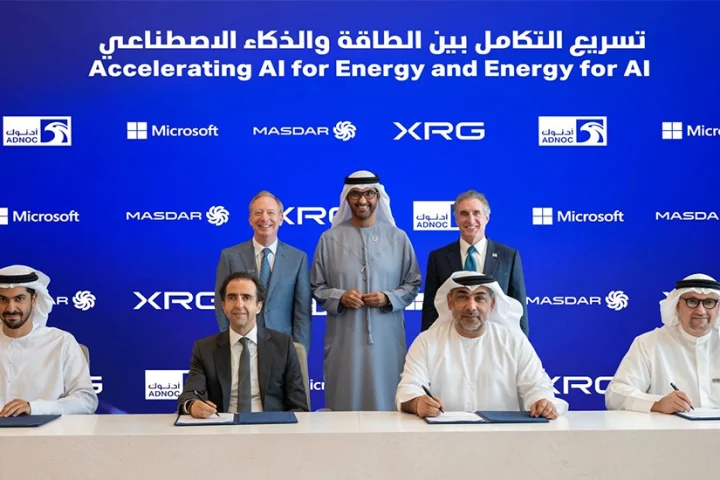The year 2020 has arrived with promise amidst a backdrop of innovation and transformation occurring at a speed never witnessed before. We’re experiencing a digital revolution that is changing the way we live, work and interact with one another. The power of information is just beginning to blossom as more of our decisions are based on data and use cases for artificial intelligence are delivering significant value. Meanwhile, global movements to protect the planet and operate responsibly continue to grow in importance. And an undercurrent of de-globalisation continues to change the way countries and companies interact with each other.
Here’s a look at some of the emerging trends and themes you can expect to take shape in 2020.
Sustainability required
Sustainability is becoming a requirement in many industries. For not only retailers and consumer goods companies, but businesses of all stripes, sustainability is increasingly expected by customers, shareholders and the masses. It is even becoming increasingly important in talent recruitment. Environmental responsibility will be a core issue in the 2020 US presidential race and elections around the globe.
One major initiative, the IMO 2020 low-sulfur mandate, kicks in on January 1st. IMO has the potential to hit the shipping industry with eye-opening impact. Demand for costly scrubbers and low-sulfur fuel will eat into margins and catch many carriers and shippers off-guard. Slow steaming will add days to already lengthy trips, forcing entire ecosystems to re-structure how they plan and execute on the production and delivery of goods while meeting requirements.
Eliminating empty miles
With a growing focus on sustainability and efficiency, empty containers will be an increasingly hot button across the shipping industry. In freight, waste means that more fuel is consumed, more carbon is emitted, and drivers spend more hours sitting idle. Empty miles, non-revenue miles or deadhead miles are a drag on the industry and economy, as businesses pay more to move goods. Carriers account for their own expectations for empty miles when deciding how much they charge for any particular load, so everyone from shippers down to end consumers, and of course, the environment, ultimately pay the cost of empty miles.
Politics and commerce become increasingly intertwined
In 2019 shifting trade policies were perceived as a distraction. In 2020, they’ll be addressed as simply part of the new reality we live in. Expect geopolitical volatility and relations between countries to become increasingly abrasive. Tariffs and trade regulations will become mainstays in business strategy discussions and everyone from chief supply chain officer to logistics manager will be keeping tabs on trade developments as a matter of doing business.
Uncertainty will remain the norm for the foreseeable future with nationalism and trade conflict acting as the source of much of the friction. Whereas news coverage of politics and business were once separate areas, in 2020 the two will be inseparable in many ways.
Human intelligence moulds Artificial Intelligence
Greater linking between the human mind and artificial intelligence is emerging. Researchers have advanced studies of the human mind, including infants, to better understand how learning develops at an early age. The goal is to enhance artificial intelligence and machine learning models to be less linear and ridged, and more curious and perceptive. Current machine learning engines require feeding thousands of labeled images to teach machines to recognise what simple objects or animals such as a cat looks like. Yet errors are still prone when images of blurred shapes resembling that object are presented.
An infant, on the other hand, learns through a handful of experiences what a cat looks like, and these might be actual photos or drawings in books. Infants also learn through experimentation and curiosity. In order to imitate this experience, some ML programmes are being developed to be rewarded for curiosity versus accuracy. This research, linking human brains to AI, will increase and begin to show specific results in further enhancing human attributes in machines.
As supply chains progress towards autonomous processes, machine learning and AI platforms will continue to learn by observing humans and data signals that span across parties, regions and supply chains, to understand the complexities and nuances of global trade. Some workflows will move to lights-out status, while many other complex scenarios involving multi-party collaboration and network-wide orchestration will require greater learning from their human counter-parts.
Supply chains retreat inward
In 2019, we saw supply chains shift out of regions such as China due to tariffs and trade conflict. In 2020 an emphasis will shift towards self-sustaining economies with supply chains relying on domestic resources and trading partners where possible. This will occur primarily in the US, China and other developed economies. Production will increasingly lean towards produce locally, deliver locally.
On the consumer side, there’s a growing trend towards domestic brands. In China, consumers are increasingly turning to Chinese brands for clothing, high-tech gadgets and phones, and cars – and increasingly shunning Western names. In the US, companies are preparing for long term tensions with China by diversifying their supply networks beyond China and building up new networks elsewhere, in many cases closer to home.
The digital Berlin wall
Kristalina Georgieva, new director of the IMF, called out in her inaugural speech that, “Even if growth picks up in 2020, the current rifts could lead to changes that last a generation – broken supply chains, siloed trade sectors, a digital Berlin wall that forces countries to choose between technology systems.” The Digital Berlin Wall metaphor emphasises emerging barriers and the impact technology is having on trade.
As supply chains retreat inward and technology enhancements are further ingrained in trade, some of the moves being made today could have long term ramifications on supply chains, with parties or regions becoming walled off. Global agility and flexibility, points of focus for years as globalisation expanded, takes a turn here. Resilience and flexibility remain important, but suddenly the ability to rapidly on-board and support suppliers outside of traditional sourcing hubs becomes essential as new digital barriers arise. Raw materials and essential input may suddenly become unavailable or costly. The need to act swiftly in the face of such risks will be essential to competing.
Upheaval of industry norms
In October, luxury brand Louis Vuitton announced plans to open a 100,000 square foot factory in Texas, the latest example of a shift away from industry best practices of consolidated production of high-end goods. Production of its high-end handbags are increasingly spread out, with 8 of its 24 manufacturing sites now residing outside of France.
In November, Maersk announced a pullback on ocean vessel investments, stating an intention to focus on land services as part of a broader initiative to drive growth. “We need to grow in acquisitions on land warehouses and customs house clearing services,” Chief Executive Søren Skou said. “We have invested around $1 billion already on the land side supply chain and we are looking to put in hundreds of millions more over the next year.”
In 2020, expect more upheaval of standard practices as businesses seek new ways to innovate and serve customers within the confines of a tense trade environment.
Next steps
Moving into 2020, it’s more important than ever for businesses to be thoroughly connected to their overseas partners. Collaboration, visibility and free-flowing data between parties are essential ingredients for thriving in a future that is increasingly uncertain and pressure-packed. Those companies that orchestrate their supply chain as a single cohesive network will have the agility and executional speed to proactively sense and respond to meet their customers’ needs. This will be a significant competitive advantage in 2020 and beyond, separating industry leaders from the laggards.
By Jonathan Wood, General Manager, Middle East and Africa, Infor.
























